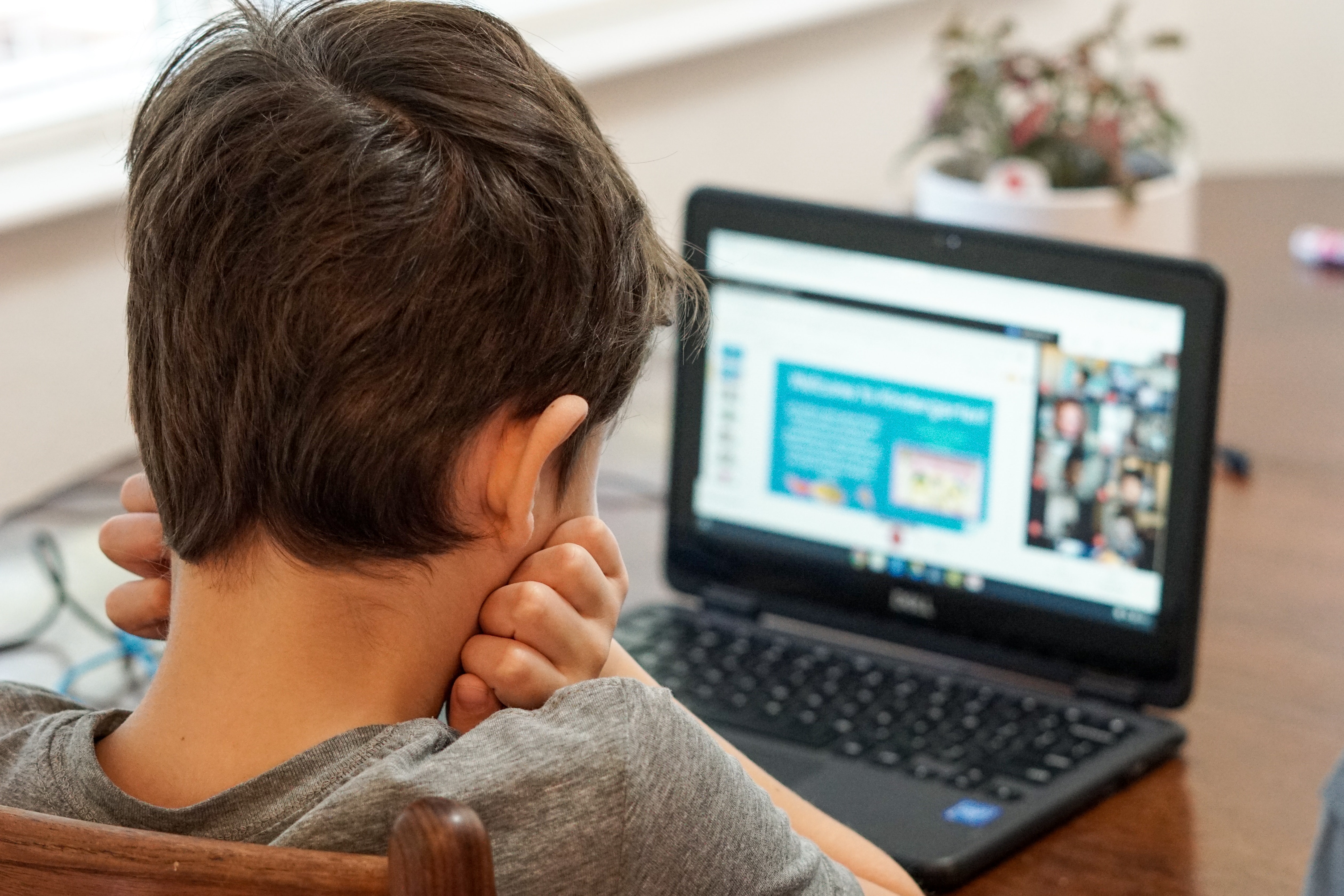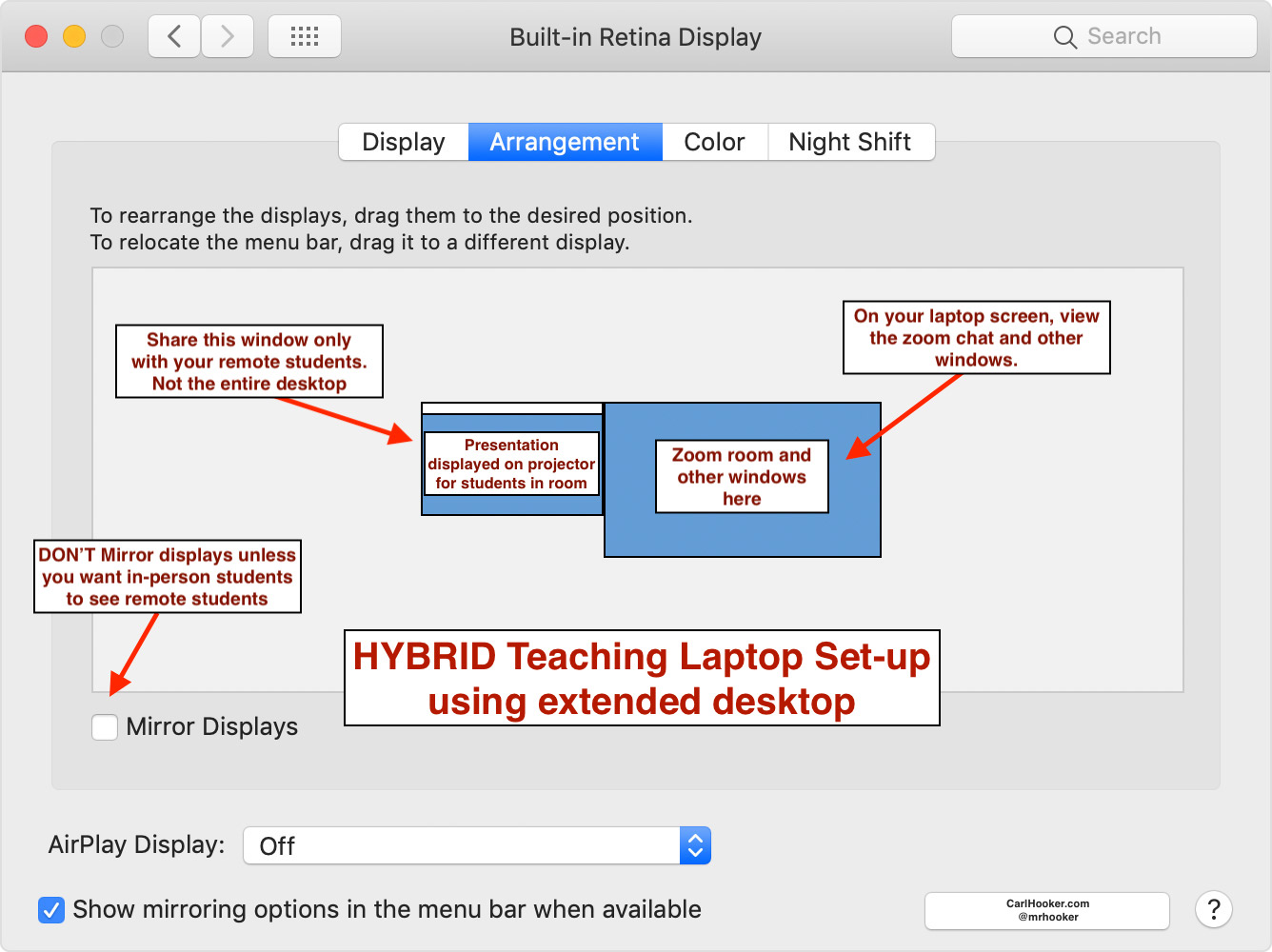How to Manage a Hybrid Classroom
Strategies for hybrid classroom teachers who are trying to simultaneously balance face-to-face and virtual students

As the leaves turn and schools are still scrambling to wrestle with the right balance of in-person and remote classes, many have shifted to what’s been referred to as a “hybrid” model. In this model, some students attend remotely while others attend in-person. Hybrids come in all shapes and sizes -- from weekly rotations to alternating half days to a more synchronous or “concurrent” model in which all students are “in class” at the same time, just in two different places.
No matter the learning model, each type comes with its own set of unique challenges in regard to managing the day-to-day classroom.
While every teaching and at-home environment is different, the strategies presented in this article should be useful in any situation, in particular a synchronous, or “concurrent,” hybrid learning environment.
Teaching in an environment in which you have students online in real-time with some students in the classroom can stretch a teacher’s capacity. Not only are they potentially dealing with troubleshooting technology issues at home, but also managing their in-person students.
Here is what teachers managing this situation should consider.
Have the same learning device in both locations
Obviously, teachers have little control over this, but a district providing a uniform device to all students adds one less layer of complexity to what already is a challenging teaching environment. Having one uniform device means that students can help one another and the teacher can turn to one basic troubleshooting toolkit if something isn’t working. Since some students are in the classroom in a hybrid setting, the teacher can also observe the “student view” to a lesson or assignment to get a better picture of what the remote student might be dealing with.
Be consistent with applications and software
This is something that many teachers can control. Have a core set of applications that all students in the class must use whether they are in-person or remote. Investing time in training students on the ins and outs of these platforms at the beginning of the year is a useful long-term strategy to avoid confusion later. Create step-sets or video instructions using a screen recording tool so that students in any location can understand how the application works and the desired outcomes.
Tools and ideas to transform education. Sign up below.
Record your instructions ahead of time
You might be thinking, “If I’m going to be doing this all live and in real-time, why would I record my instructions?” The reality is not all students will have success logging on to every synchronous lesson. They might have internet connectivity issues or you might be managing an in-person student meltdown in your classroom and forgot to let them in from the virtual waiting room. Having a recording of your lesson allows you to play the recording during the live portion and walk around the room providing assistance as needed (essentially cloning yourself). If a student misses the instructions, you can post the video on your preferred Learning Management System (LMS) of choice for later viewing. Remember: Due to FERPA regulations, recording a live video session with students and posting it on the web is not advisable.
Utilize the extend desktop feature on your laptop
Another challenge of hybrid teaching is that if you mirror your desktop to the projector screen, students will be able to see the other students on the call and chat, which could lead to unnecessary distractions. If you are teaching with a laptop, you likely have a way to extend the desktop. This is particularly useful when you are showing students in your class a presentation and you want to still see the remote students on the video call.

Place the presentation you want to project on the extended desktop and select to share that window in the video call instead of the entire screen. Students in both locations will see the presentation in real-time and you’ll be able to monitor the video chat on your laptop screen rather than the projector. Note that Google Slides and Apple’s Keynote both allow for “Present in Window” view but Powerpoint forces you to go full screen, which takes away from this technique (unless you use Powerpoint online in a browser window)
Allow time to socialize
As some students won’t be in person, they’ll miss out on some of the social interactions they would normally encounter while in class. In an elementary setting, this is particularly vital to building that classroom community. Set aside time each day for students to go into breakout rooms or small groups, mixing in-person with remote students. Allowing 5-10 minutes of playful banter on a topic helps those learning remotely to feel more included in the classroom. In a secondary setting, when doing group work, try and mix some of the remote students with the in-person students to help foster collaboration.
Use interactive online tools
One way to help foster that collaboration and sense of classroom community is using interactive online tools such as Nearpod or Pear Deck, which can work with students in class and remote at the same time. An online brainstorm wall such as a Padlet can be a powerful way to have students share their work in a virtual gallery walk. Gamified quizzing software such as Kahoot!, Quizlet or Quizziz can add an element of competitiveness that can be done in either environment. Having students reflect using a blog, Google doc, or eportfolio such as bulb, is a great way to internalize learning and help the teacher better understand the thought processes of remote students.
Don’t reinvent the wheel
When you are designing the learning experiences for students in your hybrid classroom, don’t create two different lessons for each environment. Many of the strategies and tools you use in a physical classroom should be easily translatable to an online one as well. Employing the interactive online tools previously mentioned in your synchronous class and having space on your LMS for asynchronous work and instructional videos help students achieve the same goal regardless of what environment they might be in.
Checklist for hybrid teaching and learning
- Do all students have the same device or the same access?
- How will students learning remotely receive instructions?
- How can students in-person interact with remote students?
- What tools or apps can be used seamlessly in both environments?
- What can students do asynchronously in both environments?
- What back-up plans do you have if a student cannot connect to a live video session?
Additional resources for remote and hybrid learning
These strategies are just the tip of the iceberg when it comes to tips and tools for remote and hybrid learning. If you’d like to discover and share more resources for your staff, I’ve just launched an asynchronous online course called The Remote Learning Coach. Within it, you’ll find some of the strategies mentioned above as well as videos, additional resources, and tools for teachers to thrive in any environment.
Carl Hooker has been a part of a strong educational shift with technology integration since becoming an educator. As Director of Innovation & Digital Learning at Eanes ISD, he has helped spearhead the LEAP program, which put one-to-one iPads in the hands of all K-12 students in his 8,000-student district. He is also the founder of “iPadpalooza”- a three-day “learning festival” held in Austin annually. He's also the author of the six-book series titled Mobile Learning Mindset, a guide for teachers, administrators, parents and others to support and embrace mobile learning in our schools. Read more at Hooked on Innovation.
Carl Hooker has spent the past 20+ years in education as a teacher and administrator focused on the thoughtful integration of technology and innovation. He consults for multiple districts across the country and is a frequent speaker at state and national events. In his free time he's an author, DJ, podcast host, Poetry Slammer, and Trivia Night MC. He's the co-founder of the social platform K12Leaders.com. Check out his latest book Ready Set FAIL! Now available for order here: https://mrhook.it/fail Read more of his blogs at Hooked on Innovation.
